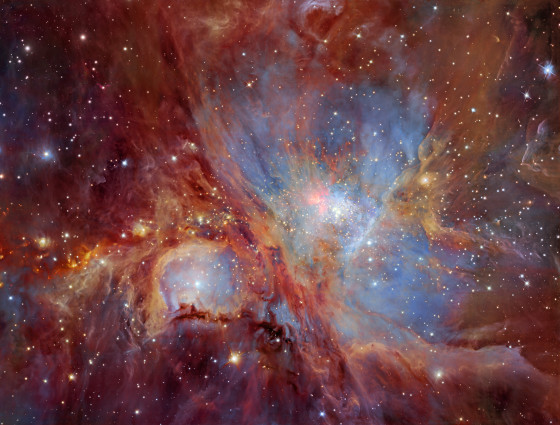Space Swoon: Orion Nebula as captured by the Very Large Telescope
No, seriously. It’s called the Very Large Telescope, and it is responsible for one of the largest and deepest pictures of the nebula ever taken.
This image of the Orion Nebula is one of the largest and deepest ever taken. It was done using the HAWK-1 infrared camera attached to the Very Large Telescope in Chile, an 8.2 meter telescope that can see celestial objects in extraordinary detail. This image is not exactly what was released by the European Southern Observatory originally; the observations were remastered by astrophotographer Robert Gendler to bring out more detail and to really shine a light (so to speak) on the phenomenal beauty of this immense stellar nursery.
There’s some important science lurking in this image, but there’s something I want to point out first. The glowing part of the nebula is actually just a small part of a much larger complex called the Orion Molecular Cloud. It’s a dense, cold cloud of gas and dust, invisible to the eye, and stars are forming in it. A clutch of stars happened to form near the edge of the cloud, and once they switched on after birth their intense radiation began carving enormous cavities in the gas, chewing away at the material in the cloud.
Because they’re near the edge, they eventually ate a hole on the side of the cloud. In a sense they popped the bubble, blowing out the cloud at their location, which happened to be on the side of the cloud facing us. When we look at the Orion Nebula, we’re actually seeing a dimple or divot scooped out of the denser material. The lower density and much hotter gas filling that dimple glows brilliantly, creating the nebula we see.
This image actually shows that extremely well. Redder material is denser, and the blue glow suffusing the nebula is lower density, hotter gas, tracing the shape of the cavity. It’s an extraordinary glimpse literally inside the nebula.




